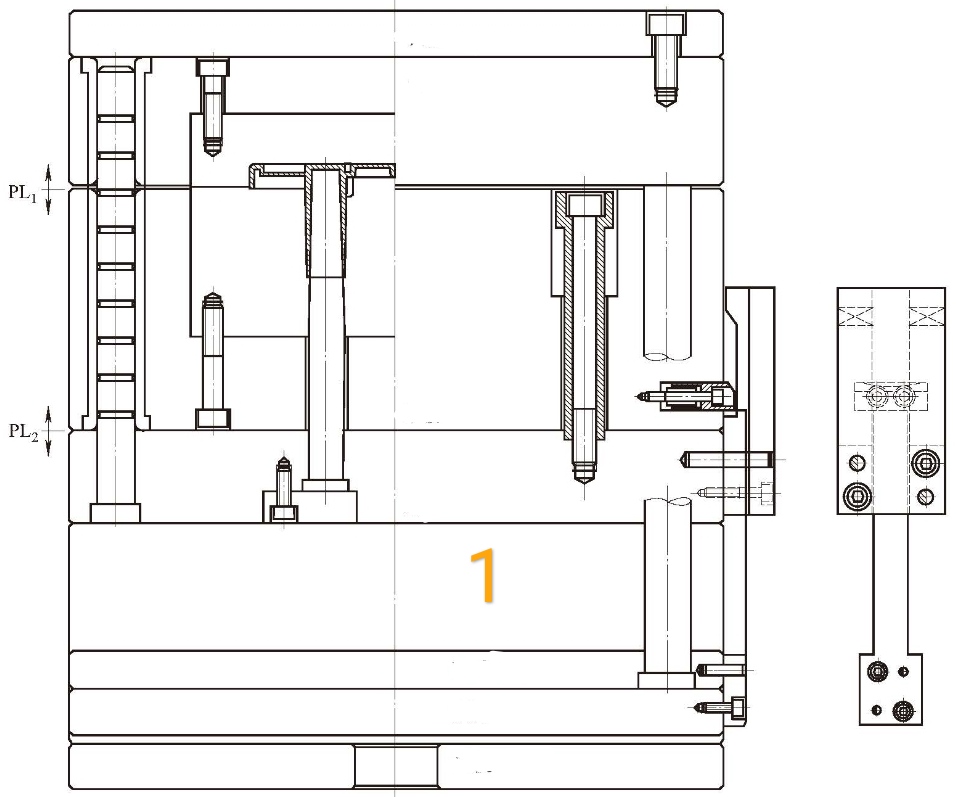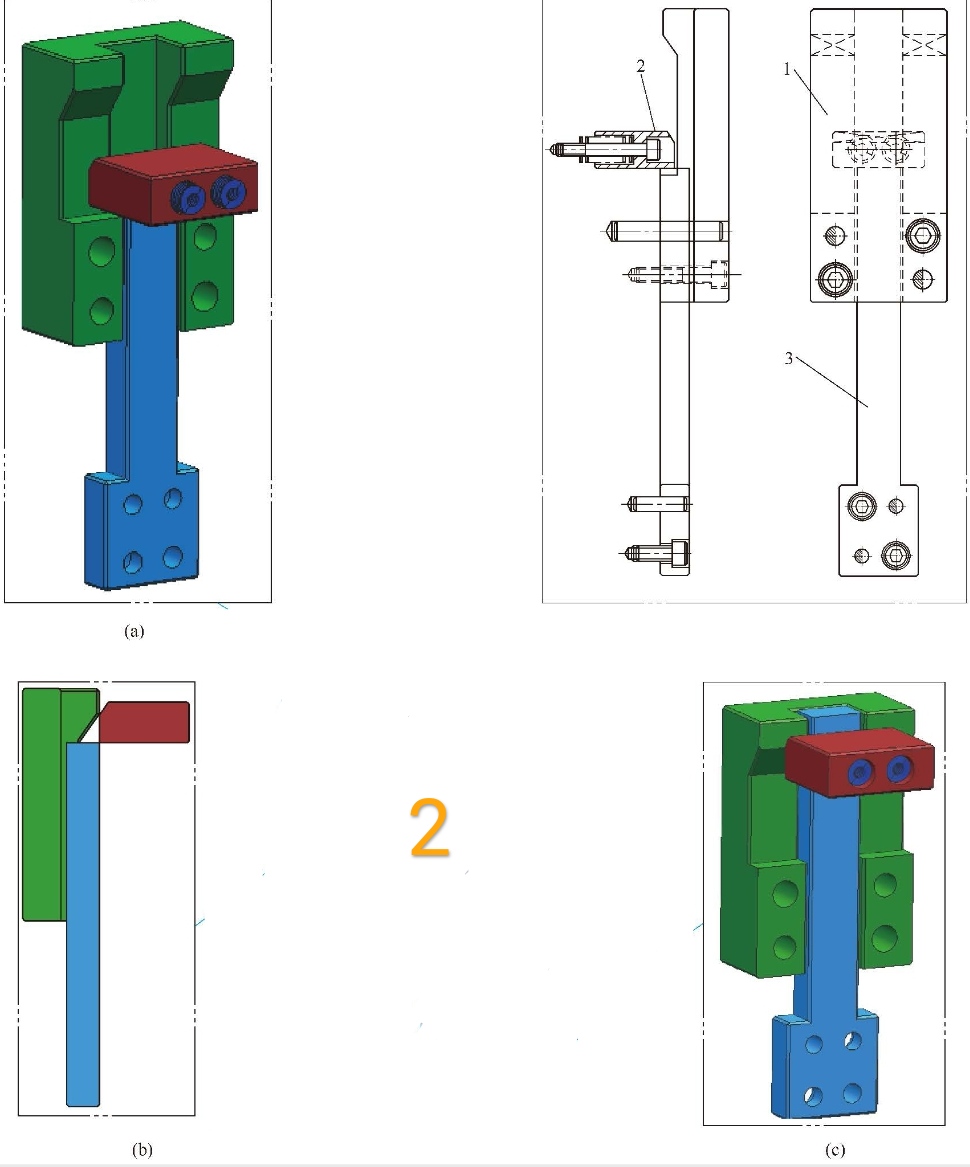Action principle:
1. As shown in figure 1, open mold at PL1 part first.
2. Put the ejector against the ejector plate, push the stripper plate forward synchronizing through the ejection component of the ejector plate, open mold at PL2 part.
3. When the stripper plate moves to the preset stroke, the ejection component releases the force on the stripper plate, the stripper plate stops moving, and the ejection plate continues to eject, removing the product from the core and completing the entire action.

Design specifications:
1. Do a proper stop block between the stripper plate and plate B, stop stroke is equal to the distance of priority core-pulling.
2. The force's stroke released by the ejection component should be less than the stripper plate's stop distance.
3. If you want the stripper plate to be pulled back along with the ejector plate, then you need to do a block on the return pin.
About the ejection component utilized:
The principle of ejection component is shown in figure 2, fixing the active block on the stripper plate, the spring on the active block allows the active block to scratch freely, the ejector pat is directly ejected on the active block, and when it moves to preset stroke, the wedge pushes the activity block to shrink inside so that the ejector pat is detached from the active block and complete the ejection process.

In figure 2,
Number 1 means wedge.
Number 2 means an active block.
Number 3 means ejector pat.
1. When the active block slides to be compressed by the wedge, the stroke of indentation to the limit should be less than 1-2mm of stripper plate's stop stroke.
2. The wedge, active block, and the ejector pat must be located on the mold.
3. The material of the active block should have heat treatment, quenching it, other components can be nitrided by kinds of P20 material.

